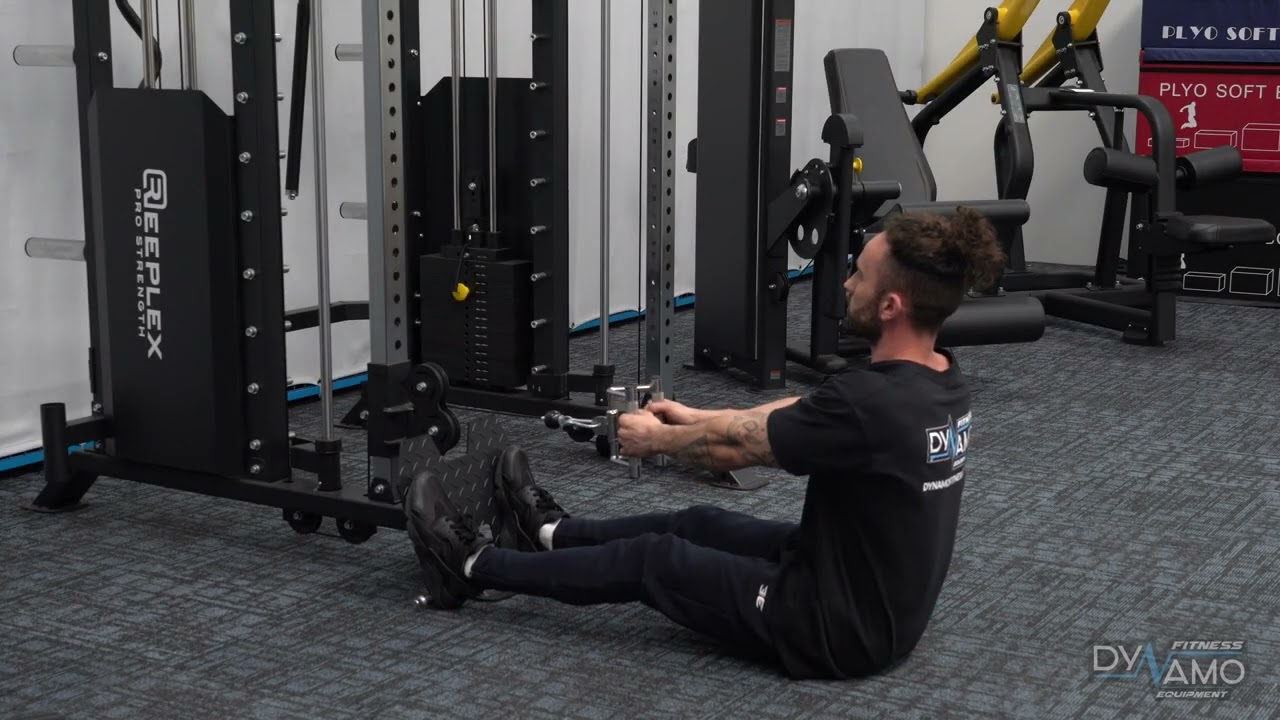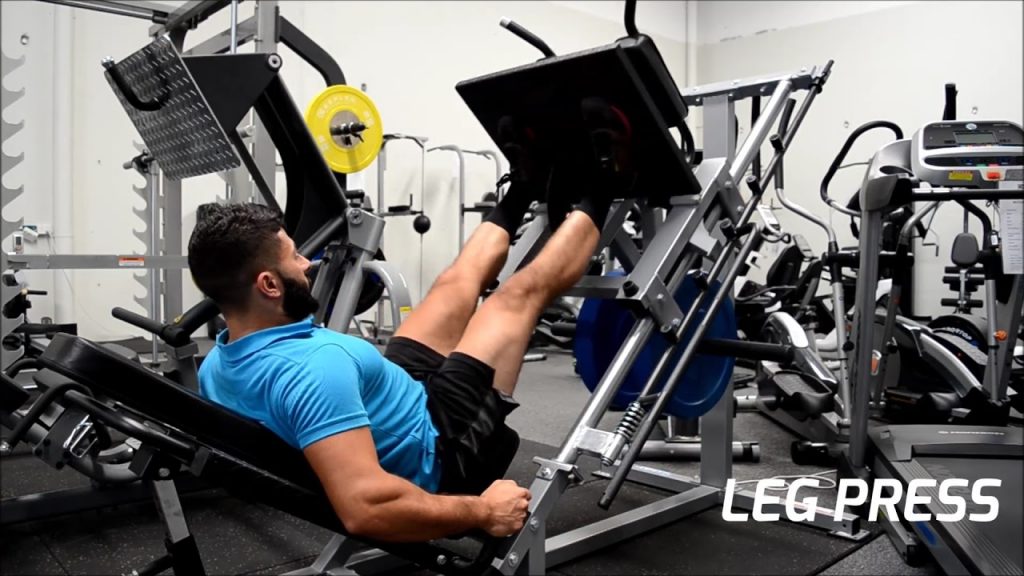
Optimal Performance Techniques with Seated Leg Press
Mastering seated leg press techniques is the key to unlocking optimal performance in your workout routine. Whether you’re a seasoned gym enthusiast or just starting, understanding the nuances of seated leg press exercise can make all the difference. From foot placement to seat positioning, small adjustments can lead to significant gains in strength and muscle development.
By honing these techniques, you’ll not only maximize your results but also minimize the risk of injury. Get ready to elevate your leg day game by mastering the art of seated leg presses for unparalleled performance gains.
Equipment Needed for Seated Leg Press
Adjustable Weight Machine
To perform seated leg press techniques effectively, an adjustable weight machine is essential. The seated leg press machine allows you to customize the resistance level based on your strength and fitness goals. Adjusting the weight ensures that you can gradually increase the intensity of your workout as you progress.
Pros:
-
Enables progressive overload
-
Suitable for users of different fitness levels
Cons:
-
Requires proper knowledge to adjust weights safely
-
May be bulky and take up space in a home gym
Foot Platform with Proper Grip
The foot platform on a seated leg press machine should have a proper grip to prevent slipping during exercises. A secure foothold is crucial for maintaining stability and executing movements correctly. It helps engage the targeted muscles efficiently while reducing the risk of injuries.
Key Information:
-
Ensures safety during workouts
-
Improves overall exercise performance
Lastly, comfortable seating with back support is vital when performing seated leg presses. The seat should provide adequate cushioning to reduce discomfort and support your lower back throughout the exercise routine.
How to Do the Seated Leg Press
Adjusting Seat and Foot Platform
To perform the seated leg press effectively, start by adjusting the seat and foot platform to your comfort. This ensures proper alignment and reduces the risk of injury. By setting it up correctly, you can target specific muscle groups more efficiently during your workout.
When adjusting the seat, ensure that your back is well-supported against the backrest. Position your feet shoulder-width apart on the foot platform to maintain stability throughout the exercise. This positioning helps in distributing weight evenly across both legs, promoting balance and control.
Read Also: Surprising Health Perks of the Seated Leg Press
Pushing with Heels for Extension
Once you are properly positioned, push the foot platform away using your heels to extend your legs fully. Engage your quadriceps and glutes as you push away from your body while keeping a controlled motion throughout. Remember to breathe steadily during this movement to maintain focus and energy flow.
Muscles Worked in Seated Leg Press
Targeted Muscles
The seated leg press primarily focuses on the quadriceps, hamstrings, and glutes. These muscles are crucial for various daily activities like walking, running, or climbing stairs. By engaging these muscle groups during the exercise, you can improve overall lower body strength.
When performing the seated leg press, your calf muscles also come into play as stabilizers. They help maintain balance and support your body throughout the movement. This additional engagement not only strengthens your calves but also enhances stability during other exercises and daily tasks.
Low Impact Workout
One of the significant advantages of the seated leg press is that it provides a low-impact workout for strengthening your lower body. Unlike high-impact exercises that may strain joints or cause injuries, this machine-based exercise allows you to build muscle without excessive stress on your knees or hips. It’s an excellent option for individuals recovering from injuries or those looking to increase lower body strength safely.
Fix Your Form: Perfecting the Seated Leg Press

Maintaining Proper Form
When performing the seated leg press, it’s crucial to maintain a neutral spine. This means keeping your back straight and avoiding arching or rounding. Ensure that your knees stay aligned with your toes throughout the movement. Misalignment can lead to undue stress on the knee joint.
To prevent potential injury, avoid locking out your knees at full extension during the exercise. By maintaining a slight bend in your knees even at full extension, you reduce the risk of hyperextension and distribute the load more evenly across your muscles.
Using Correct Foot Placement
Proper foot placement is essential for maximizing performance and preventing injuries during the seated leg press. Ensure that your feet are positioned flat against the footplate with an equal distribution of weight between both feet. This helps in maintaining stability and balance throughout the movement.
Engage with handles or supports provided by equipment if available to maintain balance and control while executing each repetition correctly. These handles offer additional support and help stabilize yourself as you push through each set.
Common Mistakes and How to Fix Them in Leg Press
Adjusting Foot Position
Placing your feet incorrectly on the leg press platform can affect muscle engagement. To optimize performance, ensure your feet are positioned shoulder-width apart and centered on the platform. This positioning helps target the quads, hamstrings, and glutes effectively. Adjust foot placement if you feel more strain in one area than others.
Incorrect foot placement may lead to uneven muscle development or potential injuries. By placing your feet correctly, you distribute the weight evenly across all targeted muscles during the exercise.
Maintaining a Flat Back
Rounding your lower back during the seated leg press can strain your spine and reduce effectiveness. Focus on keeping a flat back throughout the movement by pressing it against the seat. Engaging core muscles also helps stabilize your spine and prevents injury.
A rounded lower back not only compromises form but also shifts focus away from working out targeted muscles efficiently. Concentrate on maintaining proper posture to maximize muscle engagement during each repetition.
Tips for Improving Leg Press Performance
Progressive Overload
To enhance your seated leg press techniques for optimal performance, consider incorporating progressive overload. This involves gradually increasing the weight you lift or the number of repetitions you perform over time. By challenging your muscles in this way, you can promote strength and muscle growth effectively.
Progressive Overload:
-
Gradually increase weight or reps
-
Promotes muscle strength and growth
Controlled Movements
When performing leg presses, it’s crucial to prioritize controlled movements over speed. Focus on lowering the weight slowly and pushing it back up steadily. This approach not only reduces the risk of injury but also ensures that your muscles are fully engaged throughout the exercise.
Controlled Movements:
-
Lower weights slowly
-
Push back up steadily
-
Reduces injury risk
Incorporating variations like single-leg presses or pause reps can further challenge your muscles and improve overall leg press performance.
Variations of Seated Leg Press
Single-leg Seated Leg Press
The single-leg seated leg press is a beneficial variation that targets each leg individually. This helps in achieving balanced strength development between the legs. By isolating each leg, you can focus on any strength imbalances and work towards correcting them effectively.
This variation is particularly useful for individuals recovering from injuries or those looking to enhance their overall lower body stability and control. It allows for a more controlled movement, ensuring that both legs are equally engaged during the exercise.
Read Also: Seated Leg Press Techniques for Maximum Muscle Gain
Wide Stance Leg Press
The wide stance leg press is another effective variation that emphasizes the inner thigh muscles. By placing your feet wider apart on the footplate, you engage the adductor muscles more intensely. This variation can help in strengthening and toning the inner thighs, contributing to improved overall lower body strength.
This particular technique is popular among individuals aiming to target specific muscle groups like the adductors while still engaging other major lower body muscles such as quadriceps and hamstrings simultaneously.
You’ve got the lowdown on nailing your seated leg press game. From the right gear to perfecting your form and avoiding those sneaky mistakes, you’re all set to crush those leg days. Remember, it’s not just about pushing weights; it’s about doing it right to get the gains without the pain. So, next time you hit that seated leg press or cable machine, own it like a boss!
Now, go out there and show those leg muscles who’s boss! Keep these tips in mind, stay consistent, and watch those gains roll in. Your legs will thank you later!
